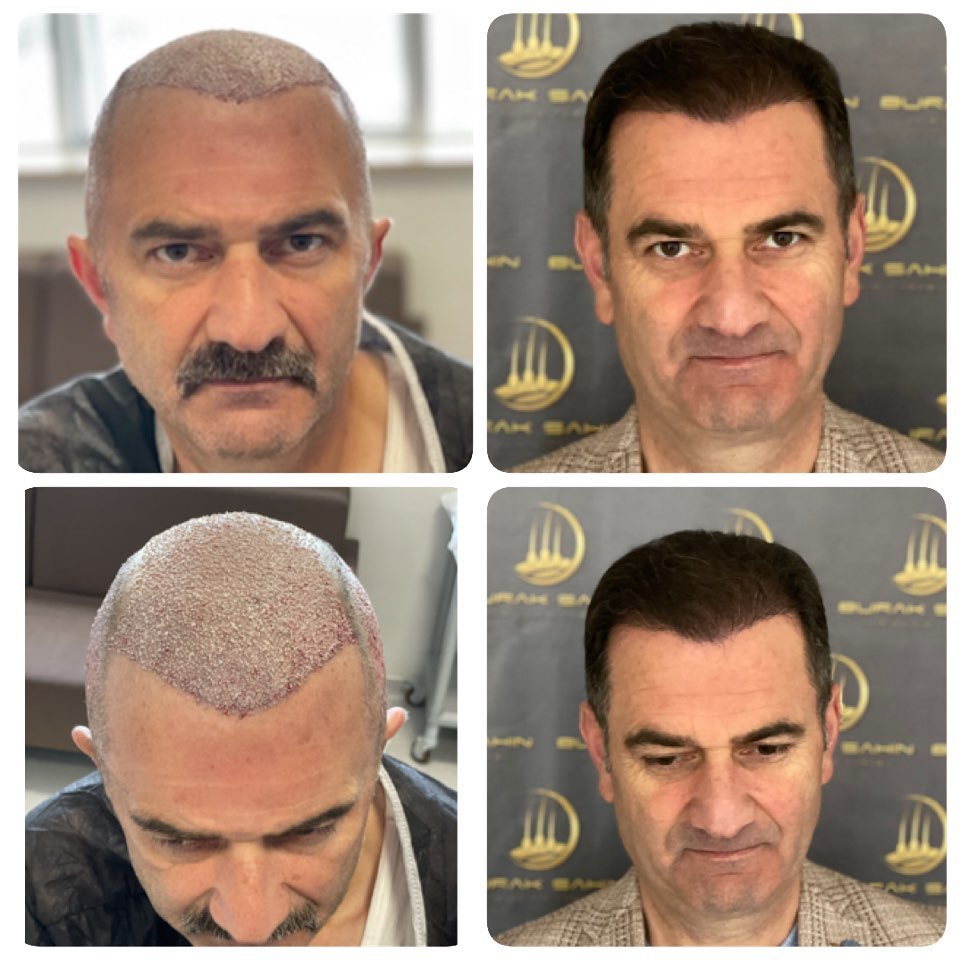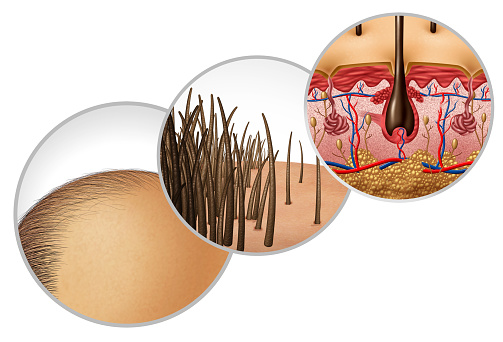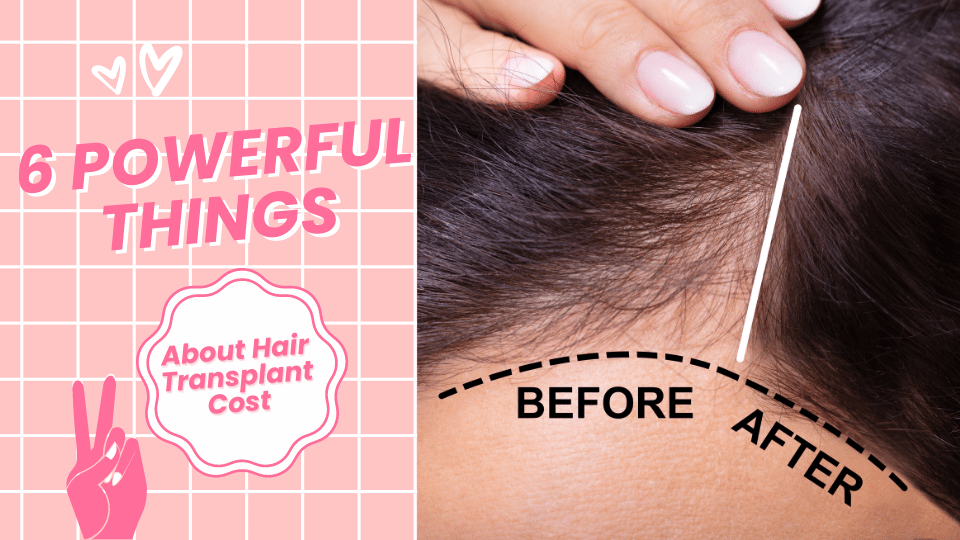People are curious as to how much does a hair transplant cost and I wanted to create a guide to help inform you. Check out this article for more information.
The medical technique known as a hair transplant involves moving hair follicles from one area of the body to another. It is often done to enhance the look of a region where hair has been lost due to illness or injury. This may be accomplished by using hair from other areas of the body.
This surgical procedure may be used to treat both male-pattern baldness and female-pattern baldness, in addition to other diseases that result in hair thinning or loss.
Table of Contents
What is a hair transplant?

During a hair transplant, hair from one part of the head is moved to a bald or thinning part of the head. With these procedures, hair loss on the scalp because of age, illness, or an injury can grow back.
They can also make bald spots and thinning hair look better. Doctors may also give them to people with alopecia, a condition that causes hair loss, as a treatment.
Most hair transplants are outpatient procedures, so you won’t have to stay in the hospital overnight. The surgery usually takes between 4 and 8 hours and occurs in a doctor’s office or clinic.
During a hair transplant, a doctor takes hair from an area of the head where hair grows well and moves it to an area where hair is thinned out or gone. Most of the time, hair is cut from the back or sides of the head.
6 Things to consider before having a hair transplant
Hair transplant cost
The price of a hair transplant varies a lot, but it usually costs between $4,000 and $15,000. Usually, you have to pay for all of these costs.
The hair transplant costs depends on many things, such as:
Location
How much a surgeon charges can depend on how much it costs to live in the area and how many surgeons who do the procedure are close by.
Procedure you choose
Follicular unit transplantation (FUT) and follicular unit extraction (FUE) are the two types of hair transplants (FUE). The price for each is different.
Skill of surgeon
If your surgeon is thought to be one of the best, they may charge you more. Still, higher rates sometimes mean that the person is better, so you should research.
Quantity of hair you want to be transplanted
If you want a few patches added, it will cost a lot less than if you want hair to grow all over your head.
Travel costs
This is not something your doctor will charge you for, but you should think about them. Sometimes you have to go out of your way to find the best specialists, and the hair transplant cost of doing so could affect whether you can afford the procedure.
Alternatives to hair transplants
If you are awaiting your hair transplant or cannot afford one, you can utilise several nonsurgical alternatives in the interim. These cures are less potent, yet they can still be helpful.
The following are alternatives to hair transplants:
Minoxidil (Rogaine), available without a prescription, is also known as Rogaine. It applies to both men and women.
Finasteride (Propecia) are tablets effective in treating male and female pattern baldness within three to six months of continuous use.
Low-level laser therapy, it stimulates cellular activity. It can treat hair loss in both sexes. It encourages hair retention and can fortify brittle hair.
Recovery after hair transplant
After surgery, your scalp may be rather sensitive. You may require pain medicine for multiple days. Your surgeon will instruct you to cover your scalp with bandages for at least two days. In addition, try to avoid Worst food ingredient for immune system , they may prescribe an antibiotic or anti-inflammatory medication to be taken for many days. Most individuals can return to work between two and five days after surgery.
Within two to three weeks after surgery, the transplanted hair will begin to fall out, but new growth should begin within a few months. After 6 to 9 months, 60 percent of a person’s hair will have grown back. Some surgeons give minoxidil (Rogaine) to enhance hair growth following transplantation, but its efficacy is unclear.
Hair Transplant Cost

The hair transplant cost varies from $4,000 to $15,000, depending mostly on the quantity of hair transplanted. Most insurance policies don’t cover it.
As with any surgical procedure, transplants carry dangers such as bleeding and infection. There is also the possibility of scarring and new hair growth that appears unnatural.
Some individuals develop folliculitis, an inflammation or infection of the hair follicles, just as new hair emerges. Antibiotics and compresses are effective in treating the issue. Shock loss is also possible in the region where new hairs have been implanted. However, this is typically temporary.
Discuss these concerns with your doctor and how much improvement you can expect from the surgery. They can assist you in determining hair transplant cost.
Hair Transplant Technique

The hair transplant cost may be influenced by the type of surgery performed. For instance, FUE (follicular unit extraction) or fue hair transplant, is one of the most prevalent techniques for removing hair follicles from the back of the head.
Nonetheless, it is one of the most expensive procedures because the surgeon must invest more time and effort. In contrast, DHI (Direct Hair transplantation) involves removing intact follicle-containing strips of skin from the scalp.
This method is less expensive than FUE, but it needs two distinct procedures, one to harvest follicles and another to implant them into the scalp, which may be more painful than a single-session surgery, so consult your doctor about hair transplant cost.
Quantity of Sessions
The cost of hair transplantation is impacted by the number of sessions necessary. If you are balding in only one place, then one session may be enough to cover that area fully.
However, if you are balding in various spots and wish to cover your entire head, you will need multiple treatments, and each session will be more expensive than the last because more grafts will need to be transplanted with each session.
FAQs
How long do hair transplants last?
New hair begins to grow three months later (90 to 100 days) and continues to grow at a normal rate. The transplanted hairs begin to take on a natural appearance six months following the procedure and will continue to grow for the rest of your life.
Are hair transplants worth it?
Hair transplants are more effective than over-the-counter hair restoration solutions in most cases. However, there are a few considerations to consider: In three to four months, anywhere from 10% to 80% of transplanted hair will fully regrow.
Conclusion
There’s no getting around the fact that hair transplant costs are costly, especially when you consider the possibility that they won’t be as successful as you’d like them to be.
You will want to learn about hair transplant costs if you think you are interested in getting one in the future and have the financial means to do so.
You can go to several different consultations to acquire an estimate of the cost and locate the surgeon most suitable for your needs.
Refrain from trying to save money by cutting corners on the expertise level of the surgeon since this will directly affect the total cost. Even though doing so may incur additional costs, employing the most qualified surgeon feasible can help you achieve the finest possible results.
Also, remember that many clinics may provide payment or financing options to assist in making the therapy accessible to a greater number of people, which can help reduce the overall cost of the initial treatment.

